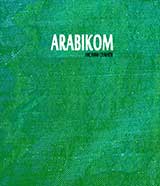Arabic and Oriental Music
Arabic music is very focused on the use of rhythmic instruments and soloists. The solo performance can be vocal, lute, ney (Arabic flute), violin or quanun. It’s very fast paced most of the time. Islamic and Arabic countries have their own culture and that’s easily transcribed into the Arabic music. You will notice that every tradition brought its own influence on Arabic music. You will have Turkish music influences, Chinese influences and so on. You will also find berber music influences here too. In addition, there are lots of great styles and music types like Muwashshah, Takht, Andalusian music, Mawwal, Khaliji and many others. When it comes to instruments, there are some very region-specific instruments in use here. You have tar, ney, buzuq, riq, quanun, rehab and lutes too. Most Arabic pieces will end up having at least 2-3 of these instruments. It’s a very complex music, just because it relies on so many pieces that need to work just right.
In modern times you will notice that there are only a few major genres that were very popular here. Sure, we still have the traditional oriental music that’s unique to every region. But then again you also have franco-arabic music, as well as Arabic R&B, Arabic jazz, Arabic rock and electronica. Despite these newer styles and genres, a lot of people still identify Arabic music with the regular sacred music that a lot of people know and love. There are some characteristics in modern and even old school Arabic music. It has the maqam system that’s very easy to identify. Then you have the aforementioned instruments, specific vocal traditions and microtones. These microtones and influences shift quite a bit based on the country we are talking about. But it does bring in front a huge range of interesting options and ideas to consider.










